If you are a Star Wars fan, you know there are many reasons to love the universe George Lucas created. One of them is the wide variety of droids that inhabit the stories. There are so many different designs, and all seem to have their own personality. Being a Star Wars nerd and a droid aficionado, I jumped at the chance to review one of LEGO’s latest entries in their line of Star Wars models: the Imperial Probe Droid.
As with all my reviews, I will judge this model on thee axis: Build quality, or how the model looks compared to the original. Playability, or answering the question of whether I would give this to my kids. Finally, and most important to readers of this blog, photograph-ability—how well this looks through a camera lens.
Disclaimer: While I did receive this model free of charge from LEGO, I am completely free to review this model exactly as I see it on the ground. No marketing craziness here, just as it should be. With that out of the way, let’s get to the review!
The build
The Imperial Probe Droid set 75306 consists of 683 bricks, and sits an impressive 10 inches high, 9 inches wide and 4 inches deep. Because most of the width is from the display base, we should note that the width of the droid itself is about 4 inches (after all, it’s basically a cylinder).
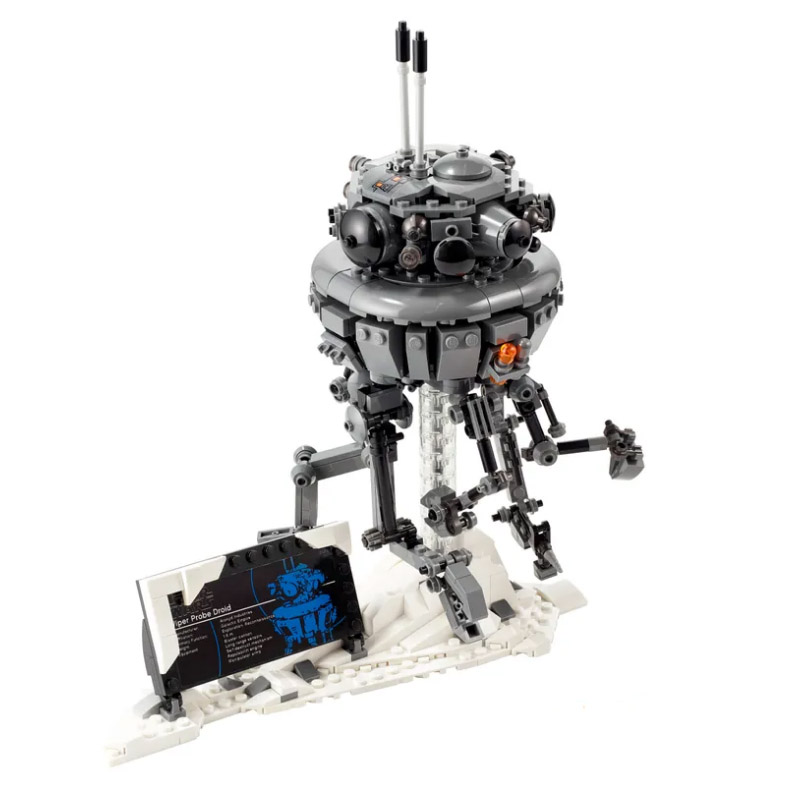
While 683 bricks seems like a low count for a model of this size, the details are astonishingly good. That is mainly due to the fact this model doesn’t have a lot of internal structure, so all those bricks go straight into decorating the outside. The modelers did a great job of it, perfectly using the SNOT (studs not on top) techniques to bring out the best details of the Imperial Probe Droid. The droid itself has a lot of sensors and arms that dangle underneath, which is a tricky thing to model with bricks. It looks mighty fine here!
All of the details, most of which never repeat, make this model fun to put together as well, since every brick is placed in a unique way. The most repetitive part is the clear stand that holds up the droid, and that takes two steps in the instructions. So extra points for the assembly fun factor!
The final nice touch is that the head swivels 360 degrees and can be positioned to your heart’s desire.
These fine details, especially in the legs, however, are a bit of a problem for playability. This model is clearly designed to be a display piece only (which it excels at). To retain the level of accuracy, the legs are not all securely attached to the bottom of the droid, so they fall off pretty easily. This is not a problem sitting on a shelf, but I would hesitate to put this in the hands of a child for play.
This flimsy legs issue will also reveal more problems with the model when it comes to the toy photography aspects, but let’s get back to looking at some of those delicious details.
Shooting the model close up
Since one of my favourite features of this model is the detail, I decided to start photographing close-ups first, before shooting the model as a whole in a scene. I tossed the model into my light box, pointed a few Lume Cubes at it strategically and enjoyed bringing out those details—starting with one of the many leg joints.
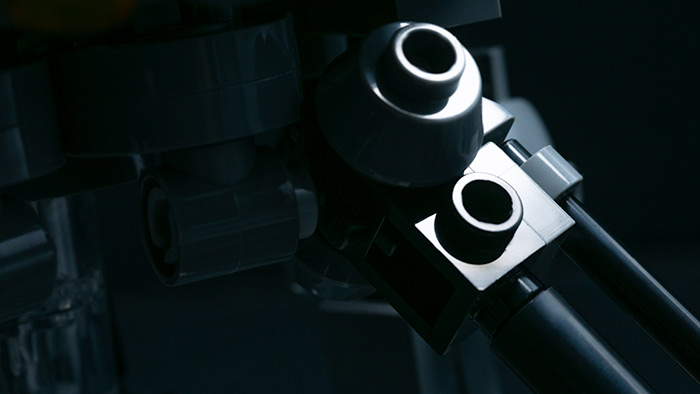
I also wanted to capture the clear bricks that serve as the sensors. If you are going to make similar shots, do yourself a favour and make sure the bricks are placed with the lettering facing up the right way. I didn’t think about the placement of the bricks (they are round, so normally who cares, right?) when I built it, but when photographing the droid, having the letters on the bricks be at random angles really detracted from my images. So I had to reposition them and reshoot.
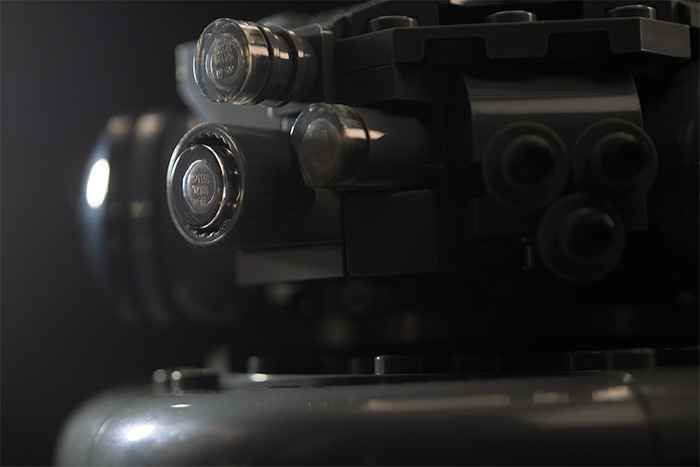
This last bit is one of the few splashes of colour in the model, and it’s on the side of the droid. I loved the way the lights brought out the details of the inside of this translucent orange brick, that seemed to glow against the background of darker greys.
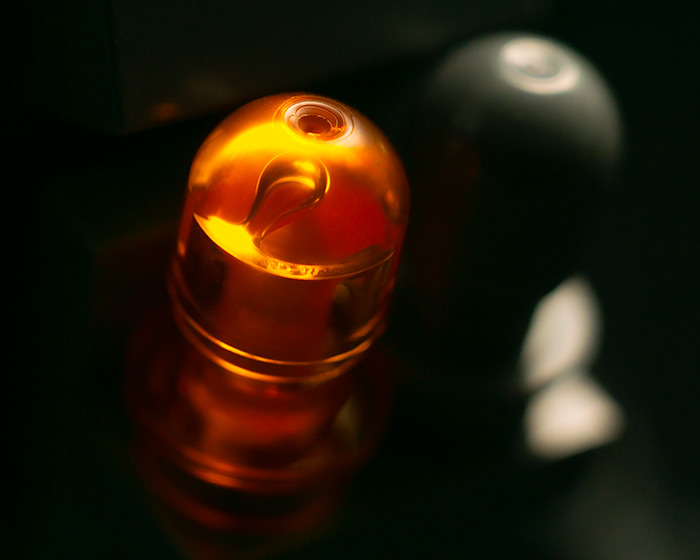
Shooting the model full-length
I knew going into this that shooting the full model would be a bit of a challenge. The Probe Droid is intended to float in the air, so it doesn’t really have any natural way to sit on the ground. My idea was to shoot the model on its stand, then composite it into a background. I’d lose the stand during that composite process.
So I set up a shot, and it quickly became apparent that my strategy was not going to work. The stand was too large and covered the legs in the back. I took a photo with some smoke so you can get a sense of what I am up against. See that stand? It is hiding entire legs. Not cool.
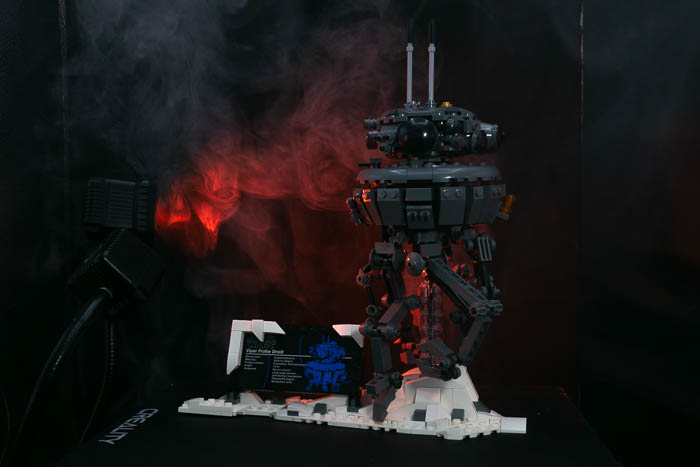
I had to come up with a different strategy and decided to try hanging the droid from some fishing line. I did a test on my bench where I wrapped the line around the “neck” of the droid. Thankfully, that joint is very secure and held the weight of the model perfectly fine.
Then I took the model outside in my backyard and hung it from a C-stand next to an old stump. (I could have used another device to hang the droid, but I happened to have a C-stand sitting around, and it seemed like it would do the job.) This is the place where I would take my shot. It wouldn’t be the most artistic, but it will be sufficient to prove the technique as viable.
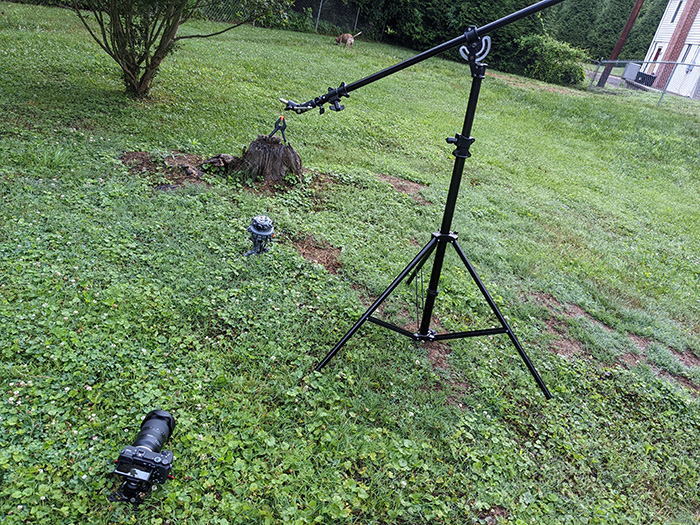
Once I had everything set up and was ready to shoot, aliens invaded. Specifically my friend’s dog, who we are dog-sitting. She got curious about this new thing in our yard. It also doubles as a SOOC (straight out of camera) shot.
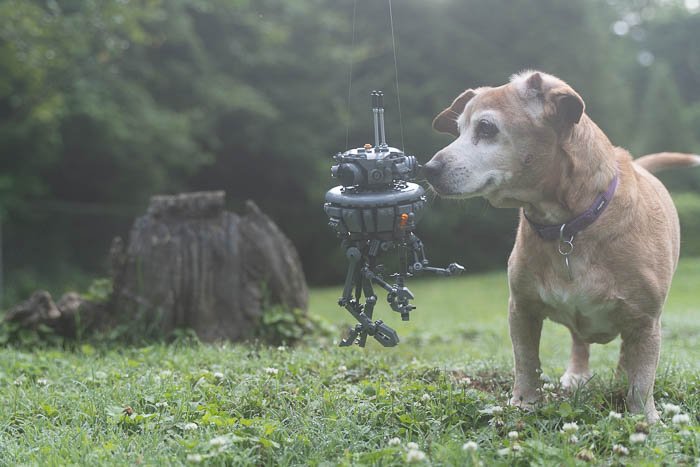
All that was left was some cleanup and colour grading in Photoshop to come up with this image.
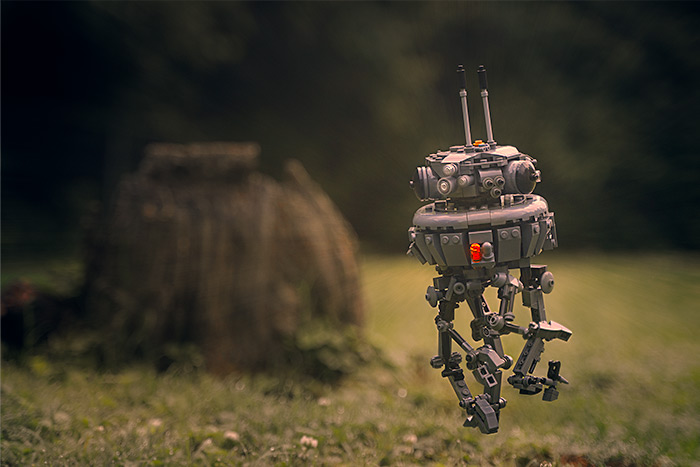
Conclusion
I must confess I like this model a lot. It looks really good, and is a faithful recreation of the droid from the movies and TV shows. The details are fantastic, and the price is right ($59.99 USD retail). It is meant to be a display piece, and it does that remarkably well. It will find its way to my Shelf of Awesomeness as soon as I finish writing this review.
For toy photography, it’s not such a clear win. Using the hanging technique is definitely workable to take this into the field and shoot it in all its floating glory. However, that floating technique requires bringing along a C-stand or something equivalent, so it’s not as easy to lug around. At the same time, the legs are flimsy and will likely fall off during transport, and may be hard to spot if they fall into leaf litter or other ground detritus. But if you are willing to deal with those inconveniences, at the end of the day the LEGO Imperial Probe Droid will look great in front of your lens.
[dave]



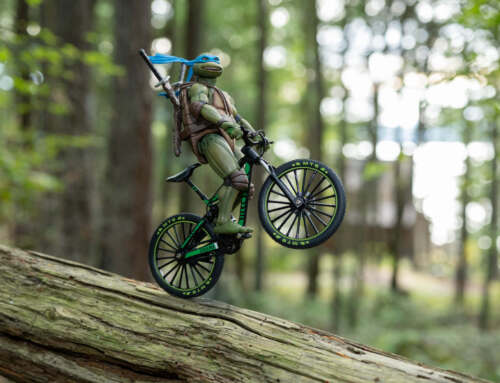
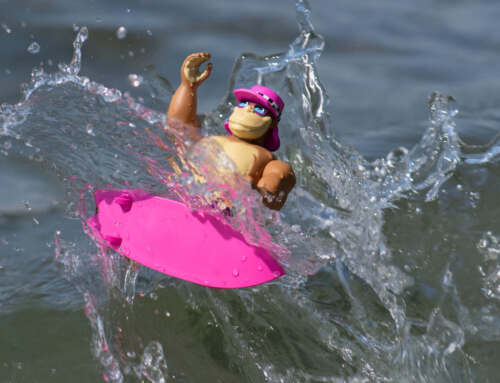

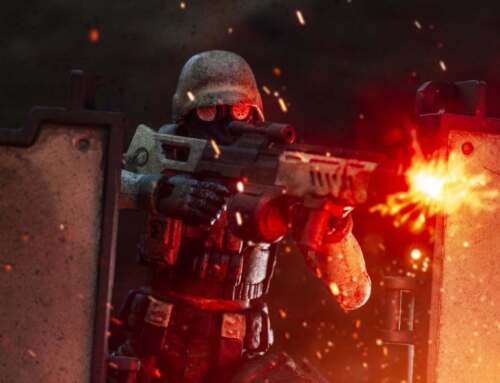
As always, it’s a great review! Thanks!
I totally love these close-ups Dave! Please, do more of them 🙂
And the shot with the dog is so cute! Can You remove the strings and post it somewhere as the probe-droid-examining-the-alien-form-of-life-on-the-distant-planet? It’s gorgeous!
Thanks for the great review, Dave.
I got my set for Father’s day, from my son.
Can’t wait to build it!